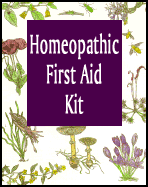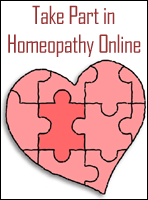SYPHILIS
Syphilis is a sexually transmitted
infection (STI), once responsible for devastating epidemics. It
is caused by a bacterium called Treponema pallidum.
The syphilis bacterium is very fragile, and the infection is almost
always transmitted by sexual contact with an infected person. The
bacterium spreads from the initial ulcer (sore) of an infected person
to the skin or mucous membranes (linings) of the genital area, mouth,
or anus of an uninfected sexual partner. It also can pass through
broken skin on other parts of the body.
In addition, a pregnant woman with syphilis can pass T. pallidum
to her unborn child, who may be born with serious mental and physical
problems as a result of this infection.
SYMPTOMS OF SYPHILIS
The initial infection causes an ulcer at the site of infection.
The bacteria, however, move throughout the body, damaging many organs
over time. Medical experts describe the course of the disease by
dividing it into four stages-primary, secondary, latent, and tertiary
(late). An infected person who has not been treated may infect others
during the first two stages, which usually last 1 to 2 years. In
its late stages, untreated syphilis, although not contagious, can
cause serious heart abnormalities, mental disorders, blindness,
other neurologic problems, and death.
Primary Syphilis
The first symptom of primary syphilis is an ulcer called a chancre
("shan-ker"). The chancre can appear within 10 days to
3 months after exposure, but it generally appears within 2 to 6
weeks. Because the chancre may be painless and may occur inside
the body, the infected person might not notice it. It usually is
found on the part of the body exposed to the infected partner's
ulcer, such as the penis, vulva, or vagina. A chancre also can develop
on the cervix, tongue, lips, or other parts of the body. The chancre
disappears within a few weeks whether or not a person is treated.
If not treated during the primary stage, about one-third of people
will go on to the chronic stages.
Secondary syphilis
A skin rash, with brown sores about the size of a penny, often
marks this chronic stage of syphilis. The rash appears anywhere
from 3 to 6 weeks after the chancre appears. While the rash may
cover the whole body or appear only in a few areas, it is almost
always on the palms of the hands and soles of the feet.
Because active bacteria are present in the sores, any physical
contact-sexual or nonsexual-with the broken skin of an infected
person may spread the infection at this stage. The rash usually
heals within several weeks or months.
Other symptoms also may occur, such as mild fever, fatigue, headache,
sore throat, patchy hair loss, and swollen lymph glands throughout
the body. These symptoms may be very mild and, like the chancre
of primary syphilis, will disappear without treatment. The signs
of secondary syphilis may come and go over the next 1 to 2 years
of the disease.
Latent syphilis
If untreated, syphilis may lapse into a latent stage during which
the disease is no longer contagious and no symptoms are present.
Many people who are not treated will suffer from no further signs
and symptoms of the disease.
Tertiary syphilis
Approximately one-third of people who have had secondary syphilis
go on to develop the complications of late, or tertiary, syphilis,
in which the bacteria damage the heart, eyes, brain, nervous system,
bones, joints, or almost any other part of the body. This stage
can last for years, or even for decades. Late syphilis can result
in mental illness, blindness, other neurologic problems, heart disease,
and death.
Homeopathic Treatment & Medicines for Syphilis
#Mercurius. [Merc]
The mercurial preparations are the first to be employed in treating
syphilis, and no homoeopathic grounds, for the pathogenesis of these
preparations corresponds to the syphilitic infection in the majority
of cases.
Mercurius corresponds to the majority of symptoms of secondary syphilis,
to the syphilitic fever, to soft chancres and to buboes. The sore
throat and the nocturnal syphilitic pains which banish sleep as
soon as the patient goes to bed are well met by the remedy. The
chancres and ulceration have dirty, lardaceous bases and foetid
discharges. It suits especially the phagedenic sores, which bleed
easily. Jahr recommended not lower than the second centesimal trituration
in this affection.
Mercurius proto-iodide corresponds to the Hunterian or hard chancre,
which is painless, with no tendency to suppuration. It also suits
well the secondary eruption. Helmuth prefers this preparation to
any in the early stages.
Mercurius bin-iodide is useful in chancre and bubo when they are
particularly indolent. It also is useful in syphilides.
#Mercurius corrosivus [Merc-c]
Is the most active of the preparations of mercury, and corresponds
to active and destructive cases, as in syphilitic ulcerations, which
are very destructive, serpiginous ulcers with ragged edges, phagedenic
ulceration and acute buboes.
#Cinnabaris [Cinnb]
Is one of the most useful forms of mercury in the secondary and
tertiary stages, and it is especially suitable to syphilis in scrofulous
subjects.
#Mercurius dulcis. [Merc-d]
A remedy often under-estimated. It corresponds to phagedenic ulcers
in the mouth and throat. Infantile syphilis frequently calls for
this remedy. The lower homoeopathic preparations are to be preferred.
#Arsenicum. [Ars]
This remedy has been used in syphilis from early homoeopathic times.
Teste, in his Materia Medica, published in 1854, writes of an arsenical
preparation then in vogue called Feltz's Anti-Syphilitic Decoction,
which enjoyed a very extensive popularity, and was stated to cure
the disease as by magic, where it had proved rebellious to mercury.
This anti-syphilitic arsenical craze of sixty years ago is repeated
in the Salvarsans of to-day, of which much has been hoped but which
are now conceded to be practically useless in the disease unless
mercury be given at the same time. Teste says Arsenicum is a very
useful remedy in constitutional syphilis, and Berjeau gives precise
indications therefor. It is indispensable in the phagedenic variety
of ulcerations with the intense burning pains and in desperate cases
of syphilitic infection with general constitutional symptoms of
the drug which frequently correspond so closely to those of some
cases of the disease.
#Kali-iodatum. [Kali-i]
This remedy is of no use in the primary or secondary stage of syphilis;
all of its manifestations belong to the tertiary stage. It has gnawing
bone pains, throbbing and burning in the nasal and frontal bones.
Papules which ulcerate, leaving scars, rupia; the ulcers are deep
eating. It also meets the nervous lesions of tertiary syphilis.
It is a valuable remedy with which to antidote the abuse of mercury.
Kali bichromicum has ulcerations, with
tendency to perforate deep down into the tissues, and is useful
in syphilitic affections of the mouth and fauces.
Kali-iodatum suits the infantile coryza in syphilitic children and
the scaly syphilides. Scrofulous subjects where the tendency to
ulceration is marked require the remedy.
#Hepar sulphur. [Hep]
This remedy is indispensable when mercury has been abused; indeed,
it more of an antidote to mercury than to syphilis itself. It may
be indicated in this disease, as may any remedy, by special symptoms,
and those of Hepar are chancres with diffuse borders and red base
with sticking pains in them,secreting a watery pus, also in the
swollen glands and their suppurative tendency. There are nightly
pains, chilliness and the sores are sensitive. It has also falling
of the hair.
#Nitric acid. [Nit-ac]
This suits especially mercurial-syphilitic cases and secondary syphilis,
phagedenic chancres with exuberant granulations, bleeding easily;
also ulceration and mucous patches. The ulcers have raised and ragged
edges and splinter like pains in them; the buboes, threaten to suppurate.
There is soreness of the skin and cranial bones,worse from damp
weather. There are ulcers in the throat irregular in outline, with
sticking pains in them and yellowish brown or copper colored spots
over the body.
Lycopodium has ulcers in the throat and a dark grayish coppery eruption
on the forehead. It suits also indolent chancres. Jahr praises this
remedy in these manifestations
#Aurum. [Aur]
Secondary syphilis with ulcerations in the mouth, especially in
cases complicated with mercurial symptoms, calls for Aurum. More
especially is it indicated when the nose is implicated and there
is caries of bones, a stinking discharge and pieces of bone are
discharged. There are also pains in the bones of the face. It has
also a correspondence to many tertiary manifestation. Aurum muriaticum
may in some cases prove more useful than Aurum metallicum. A melancholic,
low spirited condition should be present with this remedy.
#Mezereum. [Mez]
This remedy is of great value in relieving the nightly bone pains
of syphilis. There is pain and swelling in the shin bones; a syphilitic
periostitis; the parts are sensitive to the slightest touch. It
also is beneficial in syphilitic neuralgia and pustular eruptions.
Asafoetida suits syphilis of the shin
bones with nightly pains. The ulceration are most sensitive, discharging
a thin offensive pus. Syphilitic caries and necrosis, with extreme
nocturnal pain, call for Asafoetida.
Stillingia suit severe bone pains,especially
in the long bones, and nodes on the head and shin bones, where there
is extreme torture therefrom.
#Carbo animalis. [Carb-an]
In constitutional syphilis after abuse of mercury this remedy may
be indicated. It has copper colored blotches on the skin, especially
on the face; there is induration of the inguinal and axillary glands,
which is as hard as a stone, and this hardness extends even to the
surrounding tissues; this is the indurated bubo.
#Thuja. [Thuj]
While this is essentially a sycotic remedy, it has a useful field
in syphilis. Moist excrescences on the prepuce and glans, or whitish
chancres, will indicate it.
Staphisagria has soft humid excrescences
about the genital organs and dry fig warts.
Silicea may also be indicated in suppurative
conditions about the genitals.
Phytolacca has numerous syphilitic
manifestations. It is especially useful in syphilitic rheumatism,
with pains at the attachments of muscles, worse at night and in
damp weather. |

